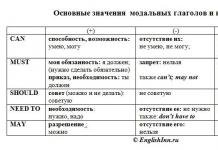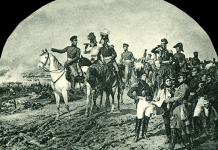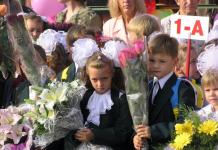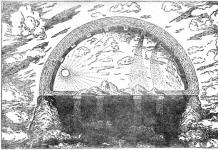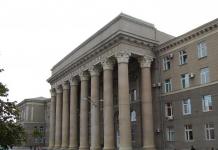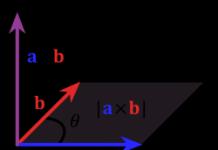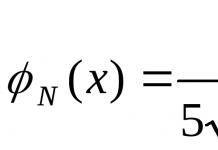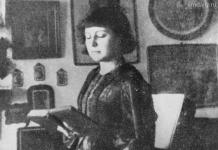Born in 1930. Graduated from Moscow State University. M.V. Lomonosov.
Since 1962 - head. Department national history magazine "Questions of History". In 1968-1971 - Instructor of the Propaganda Department of the CPSU Central Committee. In 1971-1974. – Chief Editor Publishing house "Science". Since 1974 - member of the board, head of the main department of the State Committee for Publishing, Printing and Book Trade. Since 1984 – Deputy Director, 1993-2010. - Director of the IRI RAS.
JOB TITLE:
Advisor to the Russian Academy of Sciences
JOB RESPONSIBILITIES:
Head of the Center “Historical Science of Russia”
ACADEMIC DEGREE AND TITLE:
Doctor of Historical Sciences (1983), Professor (1988), Corresponding Member of the Russian Academy of Sciences (1992)
DISSERTATION TOPICS:
Candidate's paper: “Russian village in the 17th century. (Based on materials from the patriarchal household)" (1965).
Doctoral thesis: “The Origins of Diplomacy Ancient Rus'. 9th – first half of the 10th century.” (1981).
AREA OF SCIENTIFIC INTERESTS:
Civilizational foundations of Russia's development; history of foreign policy and diplomacy of Ancient Rus'; history of Russian foreign policy in the 15th century. – 1945; socio-economic history of Russia in the 17th century; history of Russian reformism of the 18th – early 20th centuries; domestic and foreign historiography of Russian history; problems of the formation of a totalitarian system in Russia in the 20s - 30s. XX century
SCIENTIFIC AND ORGANIZATIONAL ACTIVITIES:
- Chairman of the Scientific Council of the Russian Academy of Sciences "History of International Relations and Foreign Policy of Russia"
- Chairman of the Dissertation Council of the IRI RAS “History of Russia before the 20th century”
- Member of the Scientific Council of the IRI RAS
- Deputy Chairman of the RAS Expert Commission on analysis and assessment of the scientific content of state educational standards and educational literature for secondary and high school
- Scientific director from the Russian side of the international seminar “From Rome to the Third Rome”
- Member of editorial boards and editorial boards of magazines: “ Russian history", Military History Journal", "Russian Nation", "Historical Notes", "Historical Archive"
- Member of the Editorial Board: “Orthodox Encyclopedia”, a 10-volume collection of works by M.V. Lomonosov (on the 300th anniversary)
- Member of the Bureau of NISO RAS
TEACHING ACTIVITY:
Taught history for 5 years at high school, taught for 15 years at the history departments of Moscow State Pedagogical University and Moscow State University. He gave a course of lectures on key problems in the history of Russia and on the history of reforms in Russia in the 80s and early 90s. XX century on English language at McGill University, Montreal, Canada, University of Alberta, Edmonton, Canada, University of Helsinki (Renwall Institute, Helsinki, Finland), University of Pisa (Pisa, Italy; in Russian).
AWARDS AND PRIZES:
Orders:
“Badge of Honor”, “Friendship of Peoples”, “For Services to the Fatherland” IV degree, “For Services to the Polish Republic”.
Medals and scientific distinctions:
- Certificate of Honor from the President of the Russian Federation (2010)
- Honored Worker of Culture of the Russian Federation
- Gold medal "For scientific achievements NAS of Ukraine" (2010)
- Title "Socius Honoris Causa" of the Center for Russian Studies at the University of Budapest (2010)
- Prize and medal “Pro kultura Hungarika” for significant personal contribution for the development and popularization of Hungarian culture abroad (2005)
- medal N.I. Vavilov “For outstanding contribution to scientific and educational activities and training of scientific personnel”, “Knowledge” Foundation named after. N.I. Vavilova (2008)
- UNESCO Award for Dialogue of Cultures (2005)
- Laureate of the All-Russian Historical and Literary Prize "Alexander Nevsky" (2009)
- Honorary title “Honored Scientist of the Republic of Mordovia” (05.25.2010)
- Diploma of Honorary Professor of the Scientific Research Institute Humanities under the government of the Republic of Mordovia (5/5/2010)
- Government Prize Russian Federation in the field of education for 2012.
Language skills: English (fluent).
Contact Information: [email protected]
MAIN PUBLICATIONS:
Monographs:
- Russian village of the 17th century. (Based on materials from the patriarchal household). M., 1966.
- Living voices of history. M., 1971. (co-authored with S.M. Troitsky).
- Living voices of history M., 1978. (co-authored with S.M. Troitsky).
- Stepan Razin. M., 1973; 1982; 2010. (Translated in Japan, Czechoslovakia, Hungary, Bulgaria).
- Diplomacy of Ancient Rus' IX–first half of the X century. M., 1980. (Translated in Bulgaria).
- Diplomacy of Svyatoslav. M., 1982; M., 1991.
- “We are from the Russian family...” M., 1986.
- Vladimir Monomakh. M., 1986; 1991.
- Diplomacy of Ancient Rus'. M., 1989.
- The man on the throne. M., 1992. (brochure)
- Alexander I. M., 1998.
- Devotees of Russia. M., 1999. (co-authored with A.N. Bokhanov, V.D. Nazarov).
- War and diplomacy. 1939–1945. (brochure).
- Russia: People. Rulers. Civilization. M., 2004.
- Alexander Nevskiy. M., 2009.
- Russia as part of the world civilization process. M., 2009 (brochure).
- Rus' is on the way to the “Third Rome”. M., 2010.
- Historical discoveries at the turn of the 21st century. M., 2011.
Textbooks, teaching aids:
- History of Russia from ancient times to the end of the 17th century. For 10th grade. M.: Education, 1995 et seq. (co-authored with V.I. Buganov)
- History of Russia from ancient times to the end of the 16th century. 6th grade. M.: Education, 2003–2010.
- Russian history. XVII–XVIII centuries. 7th grade. M.: Education, 2003–2010.
- History of Russia from ancient times to the end of the 15th century. Grade 10. M.: Russian word, 2003–2010.
- Russian history. XVII–XIX centuries. 10th grade (co-authored with A.N. Bokhanov)
- History of Russia from ancient times to the end of the 16th century. A book to read. M.: Rossman, 2003.
- Russian history. XVII–XVIII centuries. A book to read. M.: Rossman, 2003.
- History of Russia from ancient times to the beginning of the 21st century. In 2 volumes. Textbook for universities. M.: Astrel, 2006–2011. (co-author)
- History of religions. M.: Russian Word, 2007–2010. (co-author)
- Russian history. XIX century. 8th grade. M.: Russian Word, 2008–2010. (co-authored with A.N. Bokhanov)
- History of Russia from ancient times to the present day. In 2 volumes. Textbook for universities. M.: Prospekt, 2008. (co-authored with A.N. Bokhanov, V.A. Shestakov);
- History of Russia from ancient times to the present day. Textbook for universities. M.: Prospekt, 2009. (co-authored with A.N. Bokhanov, V.A. Shestakov)
- Basics religious cultures peoples of Russia. 4th grade. M.: Russian Word, 2011. (co-authored with K.A. Kochegarov)
Chapters and sections in books:
- Alexander I (to the history of life and death) // Russian autocrats. M., 1993. P. 14–90;
- The hard path of Russian reformism // Russian reformers. XIX–early XX centuries M. 1995. S. 7–33;
- Discussions in Soviet historiography: The murdered soul of science // Soviet historiography. M., 1996. S. 124–161;
- The main stages of Russian foreign policy from ancient times to the 15th century; Ch. 1 “History of Russian foreign policy (end of the 15th century - 1917). // History of Russian foreign policy. XV–XVII centuries. From the overthrow of the Horde yoke to Northern War. M., 1999. P. 13–105;
- Constitutional projects and civilizational destinies of Russia // Constitutional projects in Russia. XVIII–early XX centuries. M., 2000. P. 10–78;
- Russia at the beginning of the 20th century: People, power and society // Russia at the beginning of the 20th century. M., 2002. P. 5–71;
- The history of Russia is an organic part of the history of mankind; Preface to the eighth volume; I “Ancient Rus'”; II " Medieval Rus'"; III “Russia in Modern Times”; IV “Russia in the first quarter of the 19th century” // History of humanity. T. VIII. Russia. M., 2003. S. 1–396;
- Chapter I. “Diplomacy of Ancient Rus'” // Essays on the history of the Ministry of Foreign Affairs. T.I.M., 2003. (co-authored with D.N. Alexandrov, E.I. Maleto);
- People and power in 1930 // “Top Secret”: Lubyanka to Stalin about the situation in the country (1922–1934). T. 8. 1930. Part 1. M., 2008. P. 23–66;
- “Another War” (about the Soviet-Finnish War of 1939–1940) // Winter War. Research, documents, comments. M., 2009. pp. 32–34;
- Empire as a global civilizational factor // Russian Empire from its origins to early XIX century. M., 2011. pp. 11–26.
Articles:
- Anti-serfdom tendencies in the Russian village of the 17th century // VI. 1964. No. 3. P. 69–96;
- About dialectics historical development Russian peasantry (Problems of historiography of recent years) // VI. 1970. No. 1. P. 17–41;
- Historical factors in the formation of Russian absolutism // History of the USSR. 1971. No. 1. P. 110–126;
- Diplomatic recognition of Ancient Rus' (860) // VI. 1976. No. 6. P. 33–64;
- “Eastern factor” and the origin of ancient Russian diplomacy (IX–first half of the 10th century) // History of the USSR. 1980. No. 1. P. 24–44;
- International aspects of the baptism of Rus' // Bulletin of the USSR Academy of Sciences. 1988. No. 10. P. 122–133;
- Lessons from the “immortal historiographer” // Karamzin N.M. History of Russian Goverment. In 12 volumes. T. 1. M., 1989. P. 415–460;
- The political heritage of Rome in the ideology of Ancient Rus' // History of the USSR. 1990. No. 3. P. 71–83;
- I.E. Zabelin: A new assessment of creativity // VI. 1990. No. 7. pp. 71–83;
- Domestic historiography: Western assessments and our reality // Russia in the 20th century: world historians argue. M., 1994. S. 727–747;
- Historical science at a crossroads // Russia in the 20th century: Fates historical science. M., 1996. P. 5–10;
- The Romanov dynasty as a historical phenomenon // Nezavisimaya Gazeta. 12/31/1997. pp. 14–15;
- Stages and features of Russian nationalism // Russia and modern world. M., 1997. S. 56–71;
- Historical factors in the development of Russia // Place of Russia in Europe – Place of Russia in Europe. Budapest, 1999. pp. 9–17;
- Series of articles: “Revolutionary totalitarianism in our history”; "The Middle Ages on threshold of XXI century"; “Unrest and authoritarianism in Russia” and others // Free Thought. 1990s
- The formation of Russian geopolitics // Russia’s place in Eurasia. Budapest. 2001;
- Reflections on the Russo-Japanese War of 1904–1905. // IN AND. 2007. No. 4. P. 3–15;
- 1809 in the history of Russia and Finland // World and Politics. 2009. No. 12;
- 860: the beginning of Rus' // Varyag-Russian question in historiography. M., 2010. P. 555–565;
- Soviet Historiography. Modern Trends // Western and Russian Historiography. Recent Views. New York. Martin Press. 1993. p. 191–206;
- Russische Reformen im 19 und zu Beginn des 20 Jahrhunderts. M.M. Speranskiy und die Staatordnung Finnland // Reformen in Russland des 19 und 20 Jahrhunderts. Frankfurt am Main, 1996, s. 25–36;
- New Politicized History or Intellectual Pluralism? Regarding Some Tendencies in International Historiography of Russia Twentieth Century History // History–Making. The Intellectual and Social Formation of a Discipline. Stockholm, 1996. p. 141–151.
- Main Phases and Distinctive Features of Russian Nationalism // Russian Nationalism. Past and Present. London, 1998. p. 7–19.
- General and Specific in the Genesis of the Old Russian Town // Medieval Towns in Northeastern Europe. Toning, 2007.
Is historian A.N. Sakharov a doctor? What?
/pamphlet/
You, of course, remember the “Trials of Time” on Channel 5 of St. Petersburg TV, conducted by two liberal champions N. Svanidze and L. Mlechin with the participation of S. Kurginyan’s defense. At a certain place and appointed hour, a gentle, intelligent professor, Doctor of Historical Sciences Andrei Nikolaevich Sakharov appeared at the Court (not to be confused with the nuclear scientist and humanist academician A. Sakharov). He exuded the deepest philanthropy, kindness and enlightenment, regardless of “social class” affiliation to all those present at the trial.
A trial is like a surgical operation in society. At least from thieves, murderers, pedophiles. But the history doctor came forward with a claim to a public verdict on the “Bolshevik coup and its dictatorship.” The liberal press immediately picked up Andrei Nikolaevich’s painful concern for our society, broken by the communists. And the AIF newspaper provided the professor (in No. 7, 2011) in the “MAIN” section with a whole page for an “unbiased” diagnosis of the historical line: “Razin, Pugachev, Stalin - bandits or heroes?”
Beware of these soft, insinuating doctors who made their careers precisely during the time of “total persecution of dissent” and quickly got their bearings during Yeltsin’s “almost bloodless,” in their words, liberal coup. Be afraid, because they are replacing the deep-seated question about the justice of the historical struggle with a derivative question about the ways and means of waging it.
Yes, the peasants in those distant times were not collective farmers with banners and not today’s individual farmers. Having suffered from feudal oppression and landowner oppression, hard work and plight, they rose up and rebelled, took revenge and killed, robbed and burned, in a word, behaved like bandits / remember “Dubrovsky”, “The Captain’s Daughter” by A.S. Pushkin/ . Well, how should they have behaved, dearest comrade, raised by the working people, but a liberal doctor? Where could they find humanity if they were treated inhumanely?
Historical battles are not a competition of principles (dictatorship or democracy), but a fight for justice, for getting rid of the injustice of some against others. But the great moral doctor wants to instruct the masses in the rules of good manners in the fight for their interests and plays the role of a judge of their methods. " Peasant Wars“he now calls it “Cossack-peasant uprisings.” Oh! Great, wise clarification!
History has also figured out who Kerensky and Kornilov were. But the doctor, against the backdrop of what was happening in civil war shootings, hangings and mass floggings tell us about democratic views and hopes tsarist general. That is, he whitewashes the already white leader White movement. “It turned out, for example,” he writes in AIF, “that Kornilov’s political program: land to the working peasantry, respect for the rights and freedoms of people, freedom of various faiths, freedom of assembly and political parties - corresponded to the ideals February Revolution and does not contradict today’s views on a democratic society.” This is touching!
But it has long been known that when freedom and land are given from above, it turns out to be not at all the freedom and land that the people think about, which, by the way, is confirmed today. But Sakharov has authorized himself to speak on behalf of the “democratic” forces and advises reconsidering the misunderstood “tragic figure” of Kornilov.
Then the question was raised about the so-called “Great Terror” and its borders. And again, connections - either to collectivization, or to the murder of Kirov. Already 1937-1938 not enough. It must be shown that the Bolsheviks are generally rapists and terrorists. There is clearly an obsession in the doctor's efforts to present Bolshevism as a continuous mechanism of violence. All situations, according to his concepts, testify to the total viciousness and bloodthirstiness of the Bolsheviks, regardless of conditions, time, events? Soon, apparently, the armed uprising in October 17th will be represented simply as an exercise of the zoological instinct of the Bolsheviks, and not as a consequence of historical or situational necessity. This is the kind of doctor he is in his quest for objectivity. It must be said that the entire liberal press is infected with parodying Bolshevism, using the captured media to its fullest extent.
But let's move on. Isn’t it time for us, comrades, as one character said, to take aim at Joseph, you know, our Stalin? There is plenty for historians here for in-depth research discoveries... So, “bandit or hero” Comrade Stalin?
As a historian, the liberal doctor Sakharov would have to wonder why so many, several million, were repressed, were they all enemies of the Soviet system, why among the victims there were more not even enemies, but supporters, workers, builders of a new society, arrested under fabricated, false, fictitious accusations, with self-incrimination and erasure of identity? Did it come from cruelty, ill will, manic darkness or premeditated calculation? Supreme ruler or executors? Or is repression really an integral feature of Bolshevism, and it must be amputated along with the burial of the historical goal of the working people?
There are a lot of questions, but there is no scientific approach to diagnosis. There is a doctor, but there is no science. Aspirations, especially tendentious ones, are over the top, and professionalism is not worth a penny.
Meanwhile, to understand the great tragedy, a careful reading of the Marxist theory of classes is sufficient. And knowledge of who and when she was perverted. And here there is no need to delve into documents, secret or open, party or OGPU, which haunt our historians, who love to delve into archives and hidden storage facilities in order to extract sensations. Everything is open here, everything is on the surface. Read the report of J.V. Stalin at the 8th Extraordinary Congress of Soviets on November 25, 1936, when the Constitution of victorious socialism was adopted. Read and compare. And it will be revealed to you...
The classics constantly said that classes cease to exist in the period of transition to socialism, that socialism is a classless society. This was confirmed by Stalin himself. In 1934, at the XVII Party Congress, he said: “Take, for example, the question of building a CLASSLESS SOCIALIST SOCIETY /emphasized by Stalin/. The XVII Party Conference said that we are moving towards the creation of a classless, socialist society” / I.V.S. Soch. T.13.S.350/ And in 1936 he already stated that only the exploitative ones were eliminated, and the workers remained, changing. Why?
And there is no secret here. Stalin himself did not hide this. To preserve the dictatorship of the proletariat! At the top of which, with the drive belt represented by the CPSU, he was in the position of a god. Thus, a hidden coup took place amid thunderous applause.
Constant violations of the principle of party membership, which Lenin warned about, led to betrayal of Marxism and, on this basis, betrayal of the cause of the liberation of all working people.
How did this turn out? Not by any means intended repressions, as militant liberals are trying to present it, but natural ones. Since you preserved the dictatorship of the proletariat, and there was no longer a class enemy, then naturally it turned its attention to its own soil, the working people. After all, she couldn’t stop herself.
It seems that Stalin did not expect such a turnaround, because his goal was power, but he could no longer admit to the falsification of Marxism and usurpation of power. Events unfolded according to the logic of distorting everyone public relations, which have reached our time.
After this, Dr. Sakharov should have shot himself, like road engineers when tunnels do not connect, or retire. But he, apparently, is going to academics. Putin should have immediately arrested and tried Yeltsin during the transfer of power, but he took power and will soon return to the presidency. Now the whole society, mocking communists and communism, choking in the thieves and consumer frenzy, is confidently sliding towards the abyss, dragging with it humanity “saved” from the Bolsheviks. And there is only one force that can truly save humanity (I have been shouting about it since 1962). These are the innovators of social production, the successors of the ancient ancestors who gave us the stone axe, spear, bow and arrow, wheel, sail, use of fire, etc., etc.
M.: 2012. - 768 p.
The textbook is written taking into account the latest research in historical science and the modern scientific approach to the study of Russian history. The main problems of national history are covered, the issues of socio-economic and state-political development of Russia are revealed, and the author’s concept of their study is developed. The material is presented in a bright, expressive manner literary language taking into account chronology and scientific interpretation, which largely explains its accessibility to a wide range of readers. The textbook corresponds to the state educational standards higher vocational education
Russian Federation.
For applicants, students, teachers, as well as anyone interested in Russian history. Format:
doc Size:
5.3 MB
For applicants, students, teachers, as well as anyone interested in Russian history. Download: 29
doc djvu
5.3 MB 1 3.9MB
For applicants, students, teachers, as well as anyone interested in Russian history..12.2017, links removed at the request of the publishing house "Prospect" (see note)
doc pdf
5.3 MB 1 3.9MB
4 3.1 MB
CONTENT
Section I. ANCIENT Rus'
Chapter 1. ORIGIN OF THE SLAVS. THEIR NEIGHBORS AND ENEMIES 3
§ 1. The place of the Slavs among the Indo-Europeans 3
§ 2. First invasions 3
§ 3. Greek colonies and Scythians 4
§ 4. The emergence of the Eastern Slavs and new enemies 5 § 5. Other peoples on the territory of Russia in 5
ancient times
§ 6. The Great Migration and Eastern Europe 6
§ 7. Antes and the first East Slavic state 7
§ 8. The fight against the Avars and Khazars. Bulgarians 9
Chapter 2. ANCIENT Rus' 11
§ 1. East Slavic tribes VIII-IX centuries 11 § 2. The emergence of the state 16
Eastern Slavs
§ 3. The first Russian princes 22
§ 4. Reign of Svyatoslav 27
§ 5. Rus' during the time of Vladimir Svyatoslavich 32
Chapter 3. THE ERA OF YAROSLAV THE WISE 39
§ 1. Second civil strife in Rus'. Boris and Gleb - prince-martyrs.... 39
§ 3. The heyday of Rus' under Yaroslav the Wise 43
§ 4. Church and religion under Yaroslav. Metropolitan Hilarion. Pechersk Saints 47
§ 5. State power. The formation of early feudal relations.
Cities. Trade. Army 50
§ 6. From pagan riots to social protest 58
Chapter 4. Rus' AT THE CROSSROADS 62
§ 1. Civil strife in Rus' in the 70s. XI at 62
§ 2. Oleg Gorislavich’s rebellion and new strife 64
§ 3. The beginning of the military activities of Vladimir Monomakh 65
§ 4. Tragedy of 1096-1097 68 § 5. Crusade
to the steppe 1111 72
§ 6. The uprising of 1113 and the era of Vladimir Monomakh 74
Chapter 5. POLITICAL DISCOVERY OF Rus' 78
Chapter 6. EDUCATION OF PRINCIPALITY-STATES ON THE TERRITORY OF RUSSIA 81 § 1. 81
Principality of Kiev
§ 2. Chernigov and Seversk principalities 82 § 3. 84
Galicia-Volyn Principality
§ 4. “Mr. Veliky Novgorod” 87
§ 5. Vladimir-Suzdal Principality 90
Chapter 7. CULTURE OF Rus' IN THE X-EARLY XIII centuries 95
Chapter 8. THE BEGINNING OF THE MONGOL-TATAR INVASION OF Rus' 107
§ 1. The birth of the Mongol state 107
§ 2. Conquests of the Mongols 109
Section II. MEDIEVAL PERIOD
Chapter 1. HORDE RULE 112
§ 1.Batu’s invasion of Rus'. Defense of Ryazan 112
§ 2. Conquest of the rest of Rus' 113
Chapter 6. EDUCATION OF PRINCIPALITY-STATES ON THE TERRITORY OF RUSSIA 81 Chapter 2. THE FIGHT OF THE RUSSIAN LANDS FOR INDEPENDENCE. ... 116 116
Tatar-Mongol yoke
§ 2. Onslaught of enemies in the northwest. First battles with the Crusaders and Lithuanians 117
§ Z. Alexander Nevsky 119 § 4. 120
Battle on the Ice § 5. Revival of Rus'. Rus' and Golden Horde
under Alexander Nevsky... 122
§ 6. Great “small things” 124
§ 7. The rise of new Russian centers 128
Chapter 3. THE RISE OF MOSCOW 132
§ 1. The fight between Tver and Moscow for championship 132
§ 2. The rise of Moscow. Ivan Kalita 134
§ 3. Vilna or Moscow? 135
§4. The beginning of the fight against the Horde. Battle of Kulikovo 139
Chapter 4. MOSCOW TAKES THE TOP 146
§ 1. In the struggle for unity and independence 146
§ 2. The role of the Orthodox Church in the unification of Rus'. 148
§ 3. Feudal war of the mid-14th century in 150
Chapter 5. FORMATION OF THE RUSSIAN CENTRALIZED STATE 154
§ 1. Ivan III - Sovereign of All Rus' 154
§2. Liberation from the Horde yoke 157 § 3. Centralization state power
. State formation according to the Eurasian model 158
§ 4. Rus'’s entry into the international arena 161
§ 5. Formation of a multinational state 163
§ 6. Economy and people 164
§ 7. State and church 167
§ 8. Culture and life of the XIV-XV centuries. 170
Chapter 6. RUSSIA IN THE XVI century 178 § 1. Management 178
Vasily III
§ 2. The struggle of boyar groups for power 180
§ 4. Foreign policy of Ivan IV. Transformation of Russia into a Eurasian power 187
§ 5. Oprichnina. From centralization to feudal dictatorship 193
§ 6. Annexation of Siberia 199
§ 7. Crisis of power. The end of the Rurik dynasty 201
§ 8. New phenomena in Russian culture in the XVI century 203
§ 9. Boris Godunov - the first elected monarch of Russia 206
Chapter 7. RUSSIA IN THE PERIOD OF TROUBLES 213
§ 1. The Great Famine and the Beginning of the Time of Troubles 213
§ 2. Triumph and tragedy of False Dmitry 216
§ 3. Crisis of state and society in Russia 220
§ 4. Saviors of the fatherland and the path to absolute monarchy 228
Chapter 8. RUSSIA IN THE FIRST HALF of the 17th century 237
§ 1. Pacification of the country and revival of the autocracy 237
§ 2. Setting up peaceful life 240
§ 3. From defense to offense 244
Section III. RUSSIA IN NEW TIMES
Chapter 1. NEW FEATURES OF OLD RUSSIA. SECOND HALF XVII in 250
§ 1. The beginning of the reign of Alexei Mikhailovich 250
§ 2. The growth of social tension in the country 250
§ 3. Code of 1649 252
§ 4. Development of the economy 254
§ 5. Accession of Ukraine to Russia 257
§ 6. The internal situation of Russia in the last years of the reign of Alexei Mikhalovich 263
§ 7. Church reform and schism 270
§ 8. Strengthening royal power 274
Chapter 2. RUSSIA ON THE EVE OF TRANSFORMATION 279
§ 1. The reign of Fedor Alekseevich 279
§2. Regency of Princess Sophia and the rise to power of Peter I 283
§ 3. Non-Slavic peoples of Russia in the 17th century 290
§ 4. Final annexation of Siberia 293
§ 5. Culture and life of Russia in the 17th century 297
Chapter 3. THE ERA OF PETER I 305
§ 1. First years of reign 305
§ 2. Beginning of the Northern War 313
§ 3. The transformation of Russia into a great power 317
§ 4. Reforms of Peter I 326
§ 5. Reforms in the field of culture, science, education 338
§ 6. Opponents of Peter 344
§ 7. Last years life of Peter I 353
Chapter 4. THE ERA OF PALACE COUPS 356
§ 1. Russia under the successors of Peter 1 356
§ 2. The reign of Elizabeth Petrovna and the stabilization of the country 370
§ 2. Chernigov and Seversk principalities 82 Peter III and a new attempt to Europeanize the country 380
Chapter 5. RUSSIA IN THE SECOND HALF of the 18th century 384
§ 1. The first years of the reign of Catherine II 384
§ 2. The rise of the noble empire. . 390
§ 3. Foreign policy of Russia in the second half of the 18th century 401
§ 4. Economy and population of Russia in the second half of the 18th century 410
§ 5. Culture of Russia in the second half of the 18th century 416
§ 6. Russian life 428
§ 7. The alarming end of the century 431
Section IV. RUSSIA in the XIX - EARLY XX centuries.
Chapter I. RUSSIA IN THE FIRST QUARTER OF THE XIX century 439
§ 1. The first years of the reign of Alexander I 441
§ 2. Foreign policy of Russia in the first years of the 19th century 445
§ 2. Chernigov and Seversk principalities 82 Patriotic War 1812 448
§ 4. Foreign campaign of the Russian army. Congress of Vienna 464
§ 5. Life in Russia post-war period 470
§6. Decembrist movement 474
Chapter 2. THE RUSSIAN EMPIRE UNDER NICHOLAS I 484
§ 1. Emperor Nikolai Pavlovich 484
§ 2. Nicholas I and the peasant question 487
§ 3. On guard of the autocratic empire 489
§ 4. Russian industry. Industrial Revolution 492
Chapter 3. THE NATIONAL QUESTION AND IMPERIAL INTERESTS DURING THE REIGN OF NICHOLAS I. . 496
§ 1. Polish uprising 1830-1831 gt 496
§ 2. War in the North Caucasus. Imam Shamil 497
§ Z. Russia and European affairs 500
§ Z. Alexander Nevsky 119 Crimean War and the Treaty of Paris 1856 502
Chapter 4. RUSSIA IN THE AGE OF TRANSFORMATION 60-70. XIX century . . 504
§ 1. Emperor Alexander II 504
§ 2. Abolition of serfdom. The main provisions of the Manifesto of February 19, 1861 505
§ 3. Zemstvo, city, judicial, military reform. Changing the education system 507
§ 4. Development National economy 508
§ 4. Tragedy of 1096-1097 68 Russo-Turkish War 1877-1878 510
§ 6. Aggravation of the social situation. Populist terror 513
Chapter 5. MAIN DIRECTIONS OF DOMESTIC AND FOREIGN POLICIES 517
§ 1. Emperor Alexander III and government priorities 517
§ 2. The most important directions domestic policy Russia 519
§ 3. Legislation in the field of judicial and educational affairs 524
§ 4. Franco-Russian Union 526
§ 4. Tragedy of 1096-1097 68 State system V late XIX at 526
Chapter 6. SOCIAL THOUGHT AND SPIRITUAL LIFE IN RUSSIA XIX century 531
§ 1. National roots of domestic culture and foreign influences. “Golden Age” of Russian culture 531
§ 2. Slavophiles and Westerners 536
§ 3. Russian Orthodox Church. Venerable Seraphim of Sarov. . 539
§ 4. Russian utopian socialism 540
§ 5. Great writers and thinkers: F.M. Dostoevsky and L.N. Tolstoy. 542
Chapter 7. RUSSIA AT THE END OF THE 19th century 546
§ 1. Accession of Nicholas II 546
§ 2. Currency reform 548
§ 3. Census of 1897 Rich and poor 550
§ 4. Hired workers. Labor legislation. Strikes 552
§ 5. Trans-Siberian Railway 556
Chapter 8. RUSSIA AT THE BEGINNING OF XX in 559
Chapter 6. EDUCATION OF PRINCIPALITY-STATES ON THE TERRITORY OF RUSSIA 81 Russo-Japanese War. Portsmouth Peace 559
§ 2. Workers' unions. "Bloody Sunday" 562
§ 2. Chernigov and Seversk principalities 82 Revolutionary movement. Manifesto October 17, 1905 564
§ 4. Basic laws Russian Empire 1906 567
§ 5. Basic political parties 569
§ 6. First and Second State Dumas 572
Chapter 9. THE LAST DECADE OF MONARCHIC RUSSIA (1907-1917) 576
§ 1. Third The State Duma. P.A. Stolypin 576
§2. Economic recovery 1910-1913 580
§ 3. System of international unions 582
§4. The beginning of the world war. Progress of hostilities 583
§5. February 1917 in Petrograd. Abdication of Nicholas II 587
Section V. RECENT HISTORY OF RUSSIA. XX - BEGINNING XXI century: 1917-2005 IT.
Chapter 1. REVOLUTION OF 1917 ORIGINS AND REASONS 591
§ 1. Political crises of 1917 591
§ 2. Bolshevik stage of the revolution 602
Chapter 2. CIVIL WAR IN RUSSIA 606
§ 1. Birth Soviet power 606
§ 2. Brest: “revolutionary” exit from the war 609
§ 3. Policy of “war communism” 612
§ 4. White and red 615
Chapter 3. FORMATION OF THE SOVIET SYSTEM 623
§ 1. During the NEP 623
§ 2. Education of the USSR 628
§ 3. Evolution of the Bolshevik regime 630
Chapter 4. SOVIET MODERNIZATION MODEL 638
§ 1. Curtailment of NEP 638
§ 2. Conservative revolution in economics 639
§ 3. Changing the mechanism of power 644
§ 4. Formation of a new economic mechanism 648
§ 5. Soviet society on the eve of the war. Mass terror 651
Chapter 5. USSR AND THE SECOND WORLD WAR 658
§ 1. " Big game» 658
§ 2. USSR on the threshold of war 661
§ 3. Failure of plans lightning war 664
§ 4. Decisive battles 668
§ 5. Victory anti-Hitler coalition 671
Chapter 6. POST-WAR CHALLENGES. 1945-1953 675
§ 1. The beginning of the Cold War 675
§ 2. Creation of a nuclear missile shield 678
§ 3. Difficult revival 679
§ 4. The last years of Stalin’s reign 682
Chapter 7. FIRST ATTEMPT TO LIBERALIZE THE SYSTEM... 688
§ 1. Change of power in the Kremlin 688
§ 2. The beginning of de-Stalinization 691
§ 3. Reforms of the 50s - early 60s 694
§ 4. The collapse of the thaw 706
Chapter 8. THE ERA OF “DEVELOPED” SOCIALISM. 1964-1984 ... 709
§ 1. Change of political course 709
§2. From stagnation to crisis 710
§ 3. Soviet society at a turning point 713
§ 4. New attempts at modernization 716
§ 5. Failed détente 719
Chapter 9. THE COLLAPSE OF THE TOTALITARIARY COMMUNIST REGIME 723
§ 1. The origins of “perestroika” M.S. Gorbacheva 723
§ 2. Difficult turn to the market 726
§ 3. Dismantling totalitarian structures 728
§ 4. From intrasystem reforms to collapse 731
Chapter 10. MODERN RUSSIA 737
§ 1. The last Russian revolution of the XX century in 737
§ 2. Creation of a new Russian statehood 738
§ 3. Return of the market and private property 744
§ 4. Russia at the end of XX - beginning of XXI at 749
§ 5. New trends in political life 757
© A. N. Bokhanov, L. E. Morozova, M. A. Rakhmatullin (heirs), A. N. Sakharov, V. A. Shestakov, text
© AST Publishing House LLC, 2016
Section I. Ancient Rus'
Chapter 1. Prehistory of the peoples of Russia
§ 1. The appearance of man on the territory of Eastern Europe
We begin the story of Russian history from the time when the first people appeared on the territory of our country. But why does our interest go so far back into the millennia? And what does this have to do with ancient population does it have to do with the subsequent history of Russia? The answer to these questions is very simple. All generations of different tribes gradually, step by step, became builders of the history of that part of Europe and Asia that later formed Russia. They were the first to walk on this land, sailed along its rivers and lakes, subsequently plowed the land, grazed herds and built the first huts here, and, passing into oblivion, they gave life to subsequent generations. History can disappear only with humanity, but it arose only with the people who lived in these parts. This was not yet the history of mankind in in every sense this word. There were no human societies, peoples, states that make up the meaning of history; there was no writing, which people mastered and laid the foundation for the written history of the human race. But all this began with the advent of man. That’s why we call this period “prehistory.”
What time does the appearance of man date back to and what does the concept of “man” mean? Scientists believe that the separation of humans from the animal world occurred about 2.5 million years ago. This is primarily due to the fact that ancient people began to realize themselves in this world and learned to create tools, which was a clear manifestation of this higher consciousness compared to animals. These were various objects made of stone: cutting tools - choppers, various kinds of scrapers, something like stone knives; their production was achieved by striking stone against stone. Using these sharpened stone tools, the first people dug up the earth in search of edible roots, defended themselves from predators, and hunted. The climate of most of the Earth at that time was warm, the land surface was covered with dense evergreen trees. At that time, huge animals lived on Earth - mammoths, saber-toothed tigers, cave bears, giant deer. People did not need homes and clothing. Among these forests, surrounded by danger everywhere, people wandered in small groups - primitive herds - and set up camps in open places so that they could protect themselves in advance from the approaching danger, but noticed in time. Here, at the site of these sites, scientists discovered the first stone tools and the remains of man himself. People, still weak, almost defenseless, only recently getting back on their feet, needed each other in the fight against powerful animals. Therefore, they gathered in primitive groups. People learned to communicate with each other using individual sounds and exclamations. They stood more and more firmly on their feet, their hands were freed for work. Traces of sites of these people (about 500 thousand years ago) were found in vast and distant areas - in Africa, Asia, Europe, at the junction of Europe and Asia, in the Transcaucasus region.
These ancient people scientists called Pithecanthropus, i.e. ape-men (from Greek. "Pitekos" - monkey and "anthropos" - man). He stood on bowed legs, his long arms reaching almost to his knees. The torso was covered with thick hair, and the head was tilted down, as if this creature was still afraid to leave the ground. The forehead of such an ape-man was low, his chin was cut off. And the whole face was threateningly rough. But he was already a man: he thought, he invented tools for himself and the first weapons. He began his journey in history. Naturally, at that time there were neither nations nor various languages, but the habitat areas of the most ancient human groups were already determined.
There was still a long way to go from these half-humans to people of modern appearance. But the beginning human history it was already done. By the way, scientists note that the penetration of human ancestors into the territory of Eastern Europe, including Russia, began from the south - from the regions of Africa, the Mediterranean, and South Asia. It is no coincidence that the first world civilizations subsequently appeared here - in Egypt, Babylon, India, China. From there people gradually spread north.
A decisive shift in human history occurred between 100 and 30 thousand years BC. e., when, under the influence of geological, climatic, and possibly cosmic changes on Earth, glaciation of large areas began, primarily in the northern latitudes of the Earth. The climate changed sharply, giant animals disappeared - some of them became extinct, others went to warmer climes. The vegetation has become different: areas of tundra and arctic vegetation have moved far to the south. The border of the glacier reached the middle Dnieper and Don, crossed the Volga at the mouth of the Vetluga and Kama rivers, where the Chusovaya River flows into it.
In these conditions, a person was faced with a difficult, truly historical choice - how to survive, survive, preserve offspring?
During all these many harsh millennia, man desperately fought for life. Some people moved south, while others, in changed conditions, began to explore the earth's spaces on the borders of the glacial zone. Man was saved by reason and the ability to create. By this time, people had learned to use fire and received artificial heat. Apparently, at first a person received fire from forest fires, and then carefully took care of it and stored it. At that time, to lose fire meant to die from the cold. Later, people learned to create fire by rubbing dry wood against wood. This method required great skill and patience, and most importantly, the selection of appropriate types of wood. Fire gave man the opportunity to fry meat on coals. The new kind food significantly changed human physiology itself, making it more perfect; Over time, people learned to use caves as homes and take refuge in them, warming themselves with the warmth of a fire from cold and bad weather. But most of the caves were already inhabited by predators: cave lions, bears. Man challenged them: for his first homes, he entered into a fight with animals and won it. How many terrible fights took place in those dark caves where today the remains of ancient people are found near old fire pits! At the same time, the first human-built dwellings made of wood, stone, and reeds appeared, and such a type of housing as the dugout was born, which survived until the end of the 20th century. During these harsh millennia, man learned to make clothes from animal skins, which gave him an additional chance for protection from the cold and survival. At the same time, people improved tools and weapons. They were still made mostly of stone, so all this ancient period in the history of mankind is called the Paleolithic (from Greek. "palaios" - ancient and "litos" - stone). Spears with flint tips, thin stone knives, more advanced scrapers, and scrapers appeared. They were used to process the skins of killed animals and for planing.
Finally, and this is very important, the people of that time began to bury their dead fellow tribesmen. From this time the first human burials date back. A cult of the dead appeared. This means that people realized themselves as mortals and at the same time established in their minds the hope for an afterlife. Attempts to understand the innermost secrets of the universe, the secrets of birth and death, which since then people have begun to associate with the manifestation of higher powers, a deity or deities. The emergence of religious ideas finally separated man from the animal world. At the same time, art was born and speech developed. It was from this time that man finally took the path of transformation into a creature that scientists defined in the Latin words “homo sapiens” (translated from Latin as “reasonable man”).
A new book by a famous Soviet historian talks about the formation diplomatic relations Ancient Rus'. The author, drawing on materials little known to the general reader, reveals various aspects of the diplomatic activities of the first Russian princes Oleg, Igor, Svyatoslav in the wide field of political, trade and economic relations of that time.IN this volume included the following works:D. S. Dmitriev - Two Emperors
D. S. Merezhkovsky - Alexander the FirstNihilists of the past and Soviet historians created a myth about the despotism and cruelty of Alexander II.
The authors of this volume see the personality of the king and the time of his reign in a different light.The peacemaker Alexander III foresaw the essence of Russian and world destinies more and more than many of his contemporaries. The people who lived through His reign were clearly aware that then a certain degree of restrained concentration and gathering of strength began...Church split popular uprisings, the reunification of Ukraine with Russia, the war with Poland - these are the main milestones of the reign of Tsar Alexei Mikhailovich, nicknamed the Quietest. They are described in the works of pre-revolutionary writers A. Zarin, Vs. Solovyov and in the novel by K. G. Schildkret, an undeservedly forgotten writer of the Soviet period.Peter the Great's niece Anna Ioannovna ascended the Russian throne at the beginning of 1730. The time of her reign was one of the darkest eras in Russian history, called “Bironovism.”Stories about children's lives in different countries, about their feasible contribution to the common struggle for peace and independence.At the age of sixty, wise and rich life experience, Vladimir Monomakh stood at the head of Rus'. He used all his indomitable energy, intelligence and talent to unite the Russian land and repel its enemies. The hopes of contemporaries for the blessed reign of Vladimir Monomakh came true.
The novels included in this volume of the series are dedicated to the life and reign of one of the outstanding Russian princes - Vladimir Monomakh. In difficult times for Rus', he led the struggle of the Russian principalities against the Polovtsians.
====
Volume 1: "Memories".The two-volume set includes books of memoirs by academician Andrei Dmitrievich Sakharov: “Memoirs” and “Gorky, Moscow, then everywhere,” written in 1978-1989, a postscript by Elena Georgievna Bonner to “Memoirs,” as well as appendices and additions containing letters and articles and other materials.
====
In this file, “appendices and additions containing letters, articles and other materials” (and “Postscript...”) are missing.




